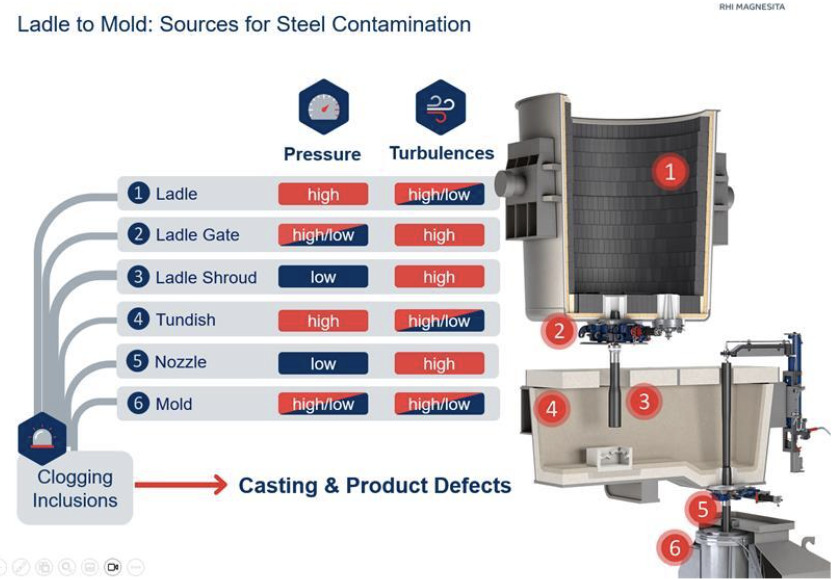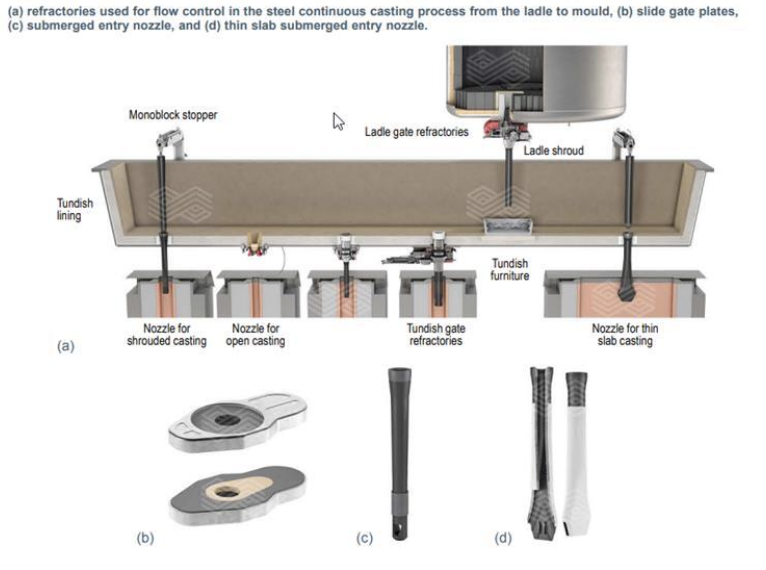In the continuous casting process of steel production, molten steel is transferred from a ladle into a tundish through a series of valves and shrouds, before entering the mold where it begins to solidify into the desired shape (see picture below). This process operates at extremely high temperatures, often exceeding 1500°C, and requires precise control to ensure the quality of the steel.

A common challenge in this process is the ingress of air caused by throttling, a necessary functionality for controlling flow during the casting process. Throttling occurs as valves open and close to regulate flow but can create a vacuum effect, drawing air into the molten steel stream and introducing oxygen and nitrogen. These gasses react with molten steel, degrading its purity and adversely affecting its mechanical properties. Monitoring pressure in critical areas of the system enables early detection of throttling and allows operators to take corrective actions, such as adjusting flow rates, injecting argon gas or purging obstructions.
Some patented systems describe pressure-sensing solutions that use capillary tubes to transmit signals from extreme environments to sensors positioned in areas with lower heat exposure. These systems often require drilling small holes into iso-statically pressed refractory products (e.g., tubes, ladles, shrouds, submerged entry nozzles) and inserting a porous membrane. This approach poses significant challenges: drilling can compromise the structural integrity of the refractory products and create potential pathways for molten steel to escape. Additionally, given the short lifespan of refractory components, embedded sensors would also need frequent replacement. An ideal solution would involve a removable pressure sensor that integrates with existing iso-refractory products without the need for drilling.
We are looking for an easy-to-couple pressure sensing solution that integrates with iso-statically pressed refractory (ISO) products (e.g., ladles, shrouds, submerged entry nozzles) used in the continuous casting process of steel production (see picture below). The solution should measure underpressures (300 millibar to as low as 10 millibar) in throttling sections of the flow control system.

We are interested in sensors that can withstand temperatures up to 1500°C while avoiding drilling, preserving the integrity of refractory components. We are also open to designs that isolate sensors from heat while maintaining accuracy, including technologies using capillary tubes to transmit signals to cooler areas, provided they require minimal modifications, such as integration with porous membranes.
- Porous-refractory-membrane integrated sensors
- Capillary-tube-based pressure monitoring systems
- Ceramic-based pressure sensors
- Sapphire-based optical sensors
- Fiber Bragg grating (FBG) sensors
- Interferometric sensors
- Ability to measure absolute pressure down to 10 millibar (100 millibar for the testing phase).
- Withstands up to 1500°C or operates remotely to avoid direct exposure to extreme heat.
- Requires minimal modifications, with openings in ISO products kept as small as possible.
- Sensors and electronics that are easy to attach and integrate with ISO products.
The Q&A is now closed.
breakthroughs today.
delivered to your inbox.